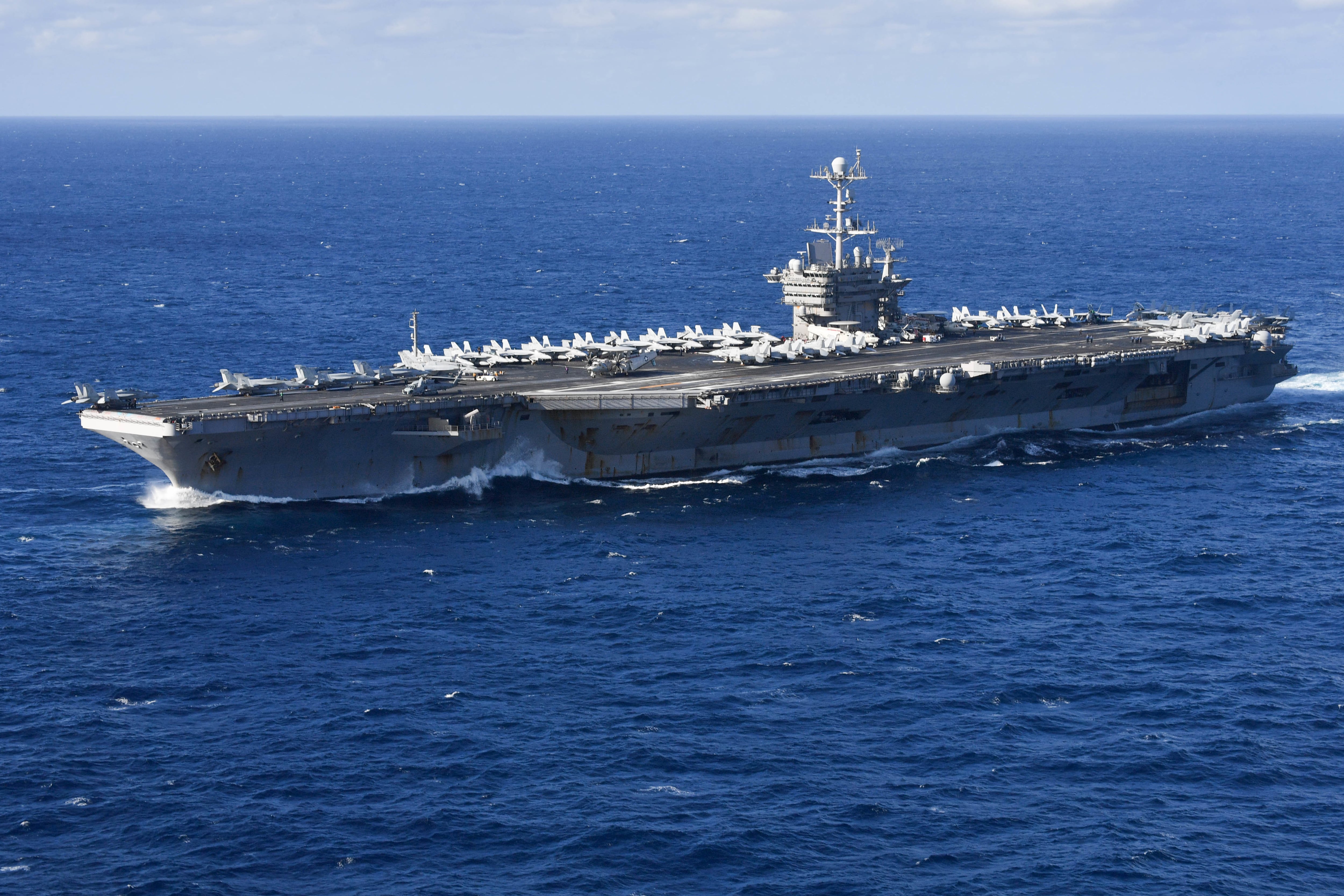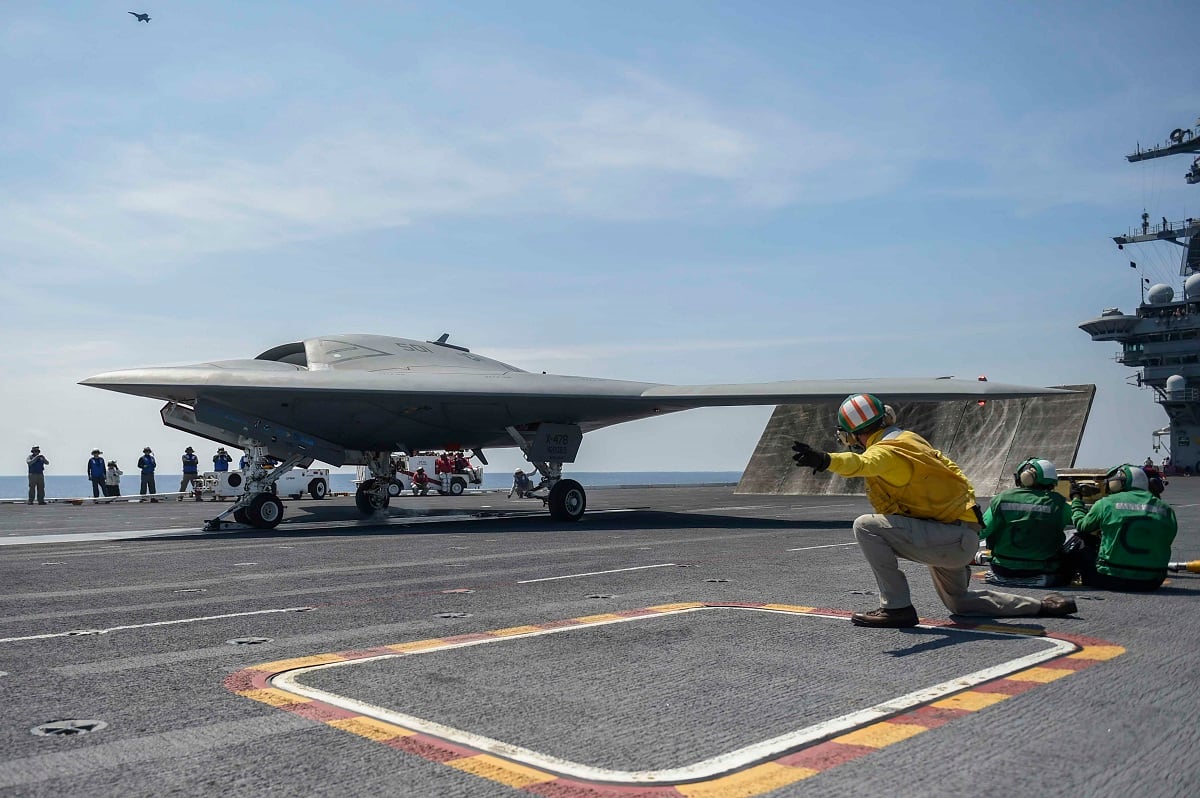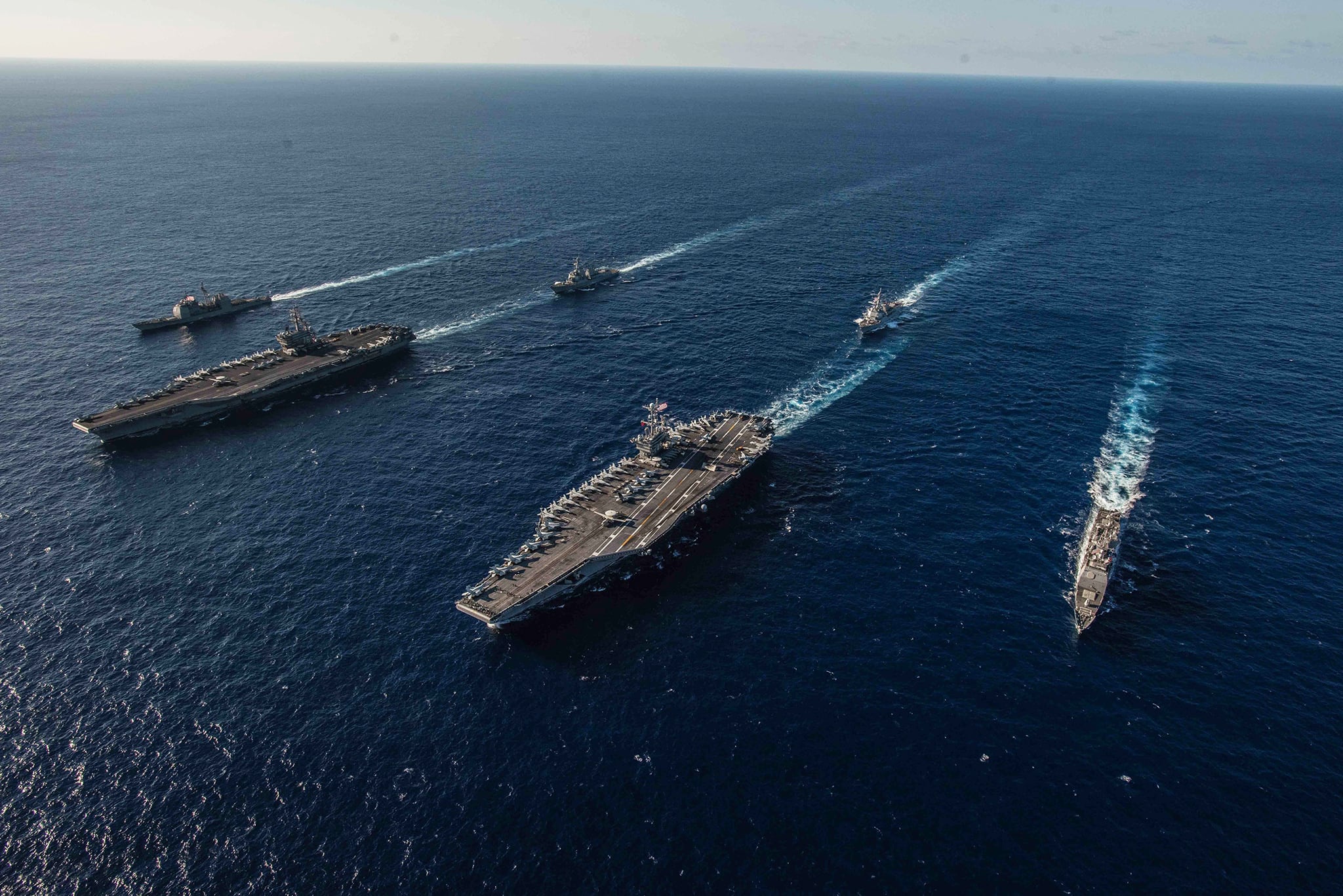For much of the 20th century, the American aircraft carrier was a swaggering symbol of naval power, a floating city that ferried fighter jets across the globe to wage war or threaten it.
But the world changed.
The U.S. military spent much of the early 21st century mired in counterinsurgency conflicts, with Navy strike aircraft spending precious hours in the skies of Iraq, Afghanistan, Syria and other hot spots.
During those years, Beijing modernized its forces, building weapons like the so-called “carrier killer” missile, which is designed to punish flattops launching jets too close to potential Chinese targets.
Now a carrier strike group must fight from the periphery of Beijing’s ballistic missile range if war erupts in the Taiwan Strait or South China Sea, perhaps as far as 1,200 nautical miles out.
And that’s beyond the reach of today’s carrier air wings, experts told Navy Times.
“The air wing of the future is going to have to be focused less on attacking terrorist training camps and huts in Syria, and more focused on killing ships and submarines at sea — dealing with naval capabilities and island-based littoral capabilities,” said Bryan Clark, a retired submariner and now a senior fellow at the Center for Strategic and Budgetary Assessments think tank.
Clark’s warning echoes a 2018 CSBA report that concluded Navy aircraft don’t have the range, endurance or survivability to carry out the operational concepts designed to defeat the forces of great powers.
The paper urged Navy leaders to “reconsider whether to continue investing in carrier aviation or shift the fleet’s resources to more relevant capabilities.”
Although the Pentagon is moving to mitigate the effectiveness and quantity of Chinese missiles by embracing a wide range of emerging technologies — everything from robot warships to laser beams — strategists have been forced to ask a hard question.
Is investing in carriers worth it when there are so many alternative vessels and systems to fund?
“Our biggest capital asset is pricing us out of the game right now, and that’s the aircraft carrier,” Navy Undersecretary Thomas Modly said during a Feb. 25 forum hosted by the nonprofit Searching for Solutions Institute.

The newest Gerald R. Ford-class flattops ordered by the Navy will cost about $13 billion each, more than triple the price tag for a Nimitz-class carrier back in Modly’s midshipmen days.
“How long can we continue to afford that? Do we need to start thinking about a different way to distribute lethality or do we still want to concentrate on that big ship?” Modly asked.
“Our adversaries are figuring out ways to keep us farther and farther away from where we need to be to maintain freedom of navigation of the seas.”
President Donald J. Trump’s administration initially appeared to agree with his concerns.
During an April 10 hearing on Capitol Hill, Navy Secretary Richard Spencer defended a Pentagon plan to scrap an air wing and retire a Nimitz-class carrier, Harry S. Truman, ahead of its scheduled 2024 nuclear refueling in Norfolk.
Those measures were expected to generate $30 billion in savings over a quarter-century, but the plan sparked a rare moment of bipartisan outrage, with lawmakers questioning why the Navy would shelve a carrier only midway through its 50-year service life.

Vice President Mike Pence ended the administration’s efforts to shelve Truman on April 30 when he appeared on board the carrier to tell the crew it wouldn’t be mothballed.
On the same date, Vice Chief of Naval Operations Bill Moran appeared before senators mulling his proposed promotion to CNO.
After noting that the Navy’s newest force structure assessment designed to outline the vessels and capabilities it needs to win future wars won’t be finished until later this year, Moran declared the aircraft carrier “the most survivable airfield that we have today and we project it’ll be that way well into the future.”
But the career aviator Moran also conceded that “Truman is a big bill” and the Navy must “modernize our force in a way we haven’t thought of in the past.”
Selling senators on scrapping Truman was always going to be tough, according to James Holmes, a retired surface warfare officer who now teaches strategy at the Naval War College and studies the threats posed by China’s rapidly expanding fleet.
“How do you convince people in Congress who may not be specialists in naval warfare, and who may represent states that benefit from shipbuilding, that you want to do this one-off decommissioning of a ship with half its service life remaining?” Holmes said. “The case may make perfect sense yet not persuade.”
But Holmes added in an email to Navy Times that the debate over Truman’s future hinted at a looming day of reckoning for all carriers in an age of long-range and precise missiles, stealthy jets and silent submarines.
“The great Yogi Berra said, ‘When you come to a fork in the road, take it,’” Holmes said. “It almost feels as though Yogi is designing our future fleet and strategy; we’re conflicted.”

Few defense analysts are calling for the wholesale retirement of America’s carrier strike groups and Holmes is no exception. But he dares to ask if the flattop has been relegated to second-string duties in the next war.
He foresees a conflict where much of the initial fighting is waged by a combination of subs, “swarms of unmanned vehicles of all types, land-based aircraft, and of course, missiles in bulk.”
Carriers and their surface warfare escorts would enter a combat zone after the battle was won in order to control the sea lanes and project power ashore.
“This would be a serious role reversal,” Holmes said. “The inexpensive and plentiful craft would do most of the fighting and the expensive and specialized craft would wait in reserve until the sea and sky were safe enough to go in.”
Retired Navy Capt. Jerry Hendrix, a defense consultant who has written about the future of the carrier, predicts sea battles will feature a “high-low mix” of American forces.
That means more subs brimming with strike missiles for the “high-end war-winning capability” and, on the low end, new frigates slicing through the waves to provide a persistent threat to unleash lethal missiles from ranges Chinese weapons can’t match.
To CSBA’s Clark, if carrier air wings can’t evolve to operate at farther ranges, unmanned surface vessels might be the best replacements for the flattops.
“USVs could be more distributed and more closely approach targets than manned surface combatants, and therefore use cheaper, smaller weapons than manned ships,” he said. “And since USVs are cheaper than manned combatants, the Navy could establish a ‘conveyer belt’ of USVs to maintain loaded ones on station and rotate empty USVs back to a secure area for reloading.”
Ford-class carriers promise to generate up to 25 percent more combat sorties than today’s Nimitz flattops can manage.
But without longer aircraft operating ranges and improved survivability, the warships will need to enter the Chinese ballistic kill zone to launch the planes before sailing back to safety, perhaps ending up too far away to retrieve the jets.
“That approach will not generate very many sorties at the ranges needed and will put the carriers at risk,” Clark said.

As a stopgap measure, Clark has championed the Navy’s MQ-25 Stingray project.
Last year Boeing won an $805 million contract for the first four midair refueling drones but Clark estimates the sea service needs up to eight Stingrays in each air wing for today’s jet fighters to strike their targets.
Each Stingray promises to enable a pair of Super Hornets or two F-35C Joint Strike Fighters to go 1,000 nautical miles and back, the edge of China’s anti-ship missile ranges.
But Bob Work, the former deputy secretary of defense in President Barack Obama’s administration, said the MQ-25 isn’t a long-term solution.
“They are going to be able to drag some forces out pretty far, but [the air wing is] not going to be able to sustain a large number of aircraft at 1,000 nautical miles,” he said.
RELATED

Clark’s math also isn’t optimistic. In order to extend the ranges of more jets, carriers might need to integrate up to 15 Stingrays in each wing. And that threatens to boot too many strike aircraft out of a hangar bay for air campaigns to succeed.
The Navy really needs a drone tanker that can operate up to 3,000 nautical miles without refueling, he said.
It also must be able to kill enemy surface vessels and submarines, fly traditional aircraft strike missions and engage in electronic warfare against the enemy.
But that robotic Swiss Army knife of naval aviation doesn’t exist and Congress continues to bet heavily on a fleet of flattops, gobbling dollars that could procure other warships and drones.
And that’s why defense analysts concede that even if carriers become obsolete, they’re not going to disappear from the fleet.
“Even if we stopped building carriers tomorrow, you’re going to have five carriers in the force in 25 years,” Hendrix said. “Nothing’s going to happen very quickly, unless there’s a Pearl Harbor.
“That was when we went instantly from being a battleship force to a carrier force, because that was all we had left.”
Geoff is the managing editor of Military Times, but he still loves writing stories. He covered Iraq and Afghanistan extensively and was a reporter at the Chicago Tribune. He welcomes any and all kinds of tips at geoffz@militarytimes.com.




